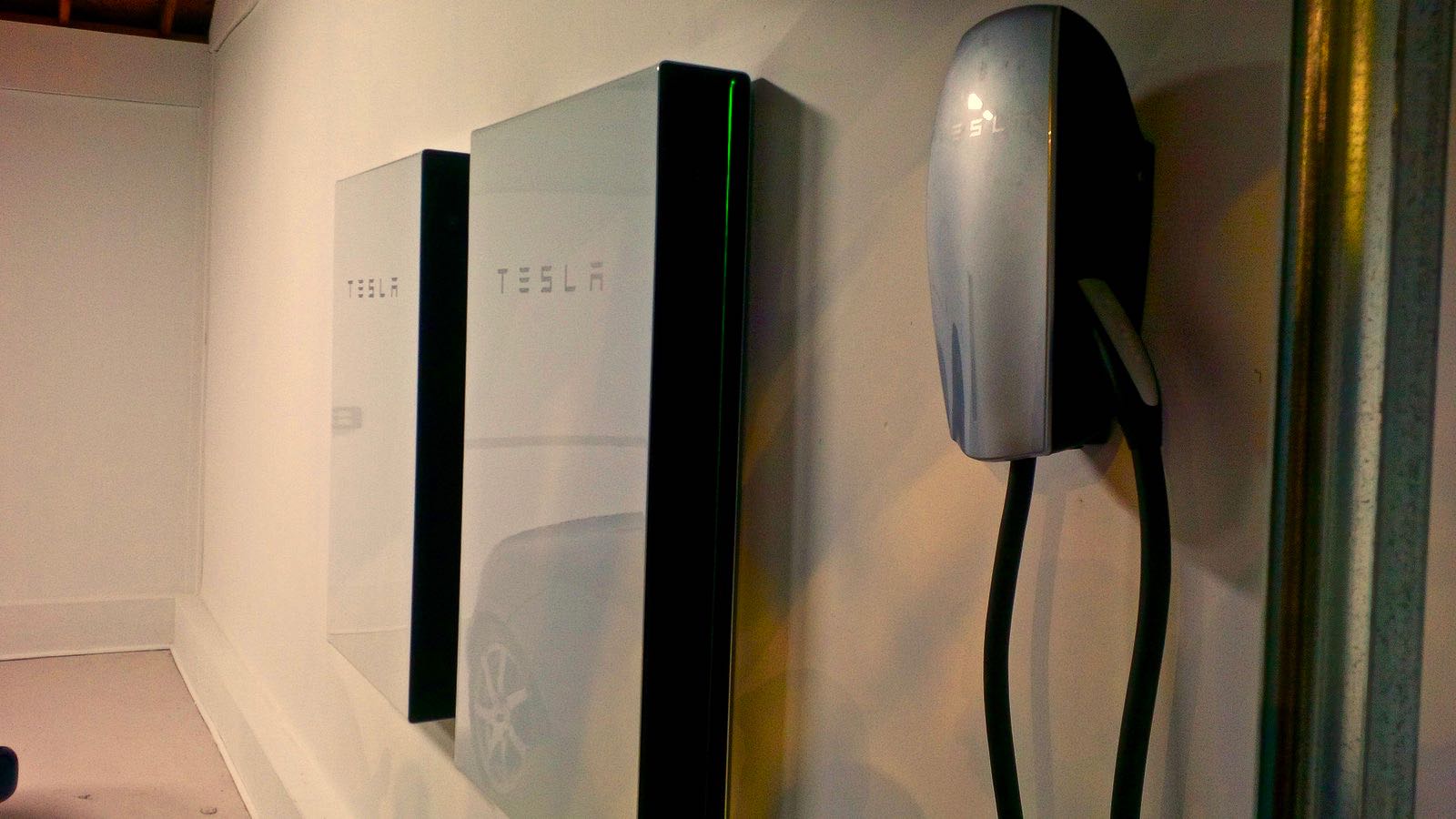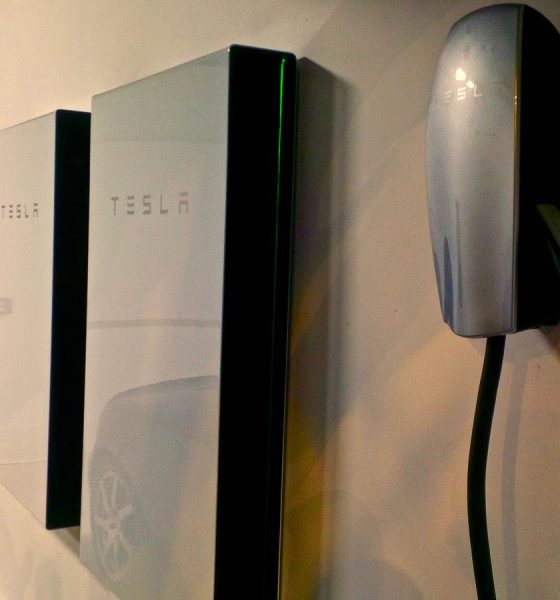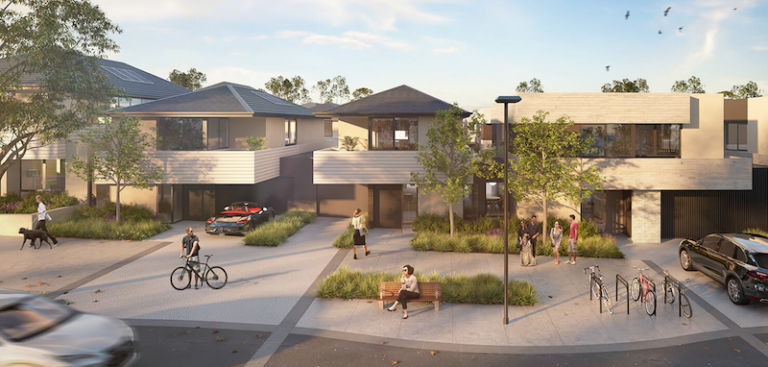

Energy
Tesla Powerwall advocates fight proposed ban on in-home lithium ion battery storage systems in Australia
Battery storage systems are exceedingly popular in Australia, which has some of the highest energy costs in the world. Battery storage systems like the Tesla Powerwall are seen as the answer to high electricity costs when coupled with a rooftop solar installation. There are currently 1.6 million homes in Australia with rooftop solar and the majority of those home owners say they are interested in adding battery storage to help them reduce the amount of electricity they draw from the grid.
On February 13, a report leaked in the Australian press saying that Standards Australia, a non-governmental group similar to Underwriters Laboratories, was about to recommend that any storage devices using lithium ion cells not be installed inside homes but rather in free standing kiosks or bunkers added to the exterior of buildings.
According to Australia’s RenewEconomy, the new standard would add thousands of dollars to the price of a complete solar power system and imperil what is considered to be a multi-billion dollar business opportunity. Bloomberg New Energy Finance believes there could be as many as 6 million residential storage battery installations in Australia in the next 15 years.
The leaked report created a whirlwind of protest. No other country has such restrictions on storage battery installations. John Grimes, head of the Australian Solar Council, says that other countries like Japan and the United States do not have bans on lithium ion storage batteries in homes. He adds that there are already 30,000 such devices in Germany, where lithium ion devices are banned only in sleeping areas.
Apparently Standards Australia grew concerned when reports surfaced that the Samsung Galaxy Note had a disturbing tendency to burst into flames. That device has now been banned from all commercial aircraft whether in carry on or checked luggage.
The proposed rules could have a devastating effect on a virtual power plant program being promoted by AGL Energy in South Australia. That concept would link up to 1000 home solar systems together with a sophisticated digital control network designed to manage each system remotely and maximize the efficiency of the entire microgrid.
Australia is ripe for solar power development because of the abundance of sunshine it receives every day. In fact, there is already a planned community near Melbourne, Australia that has been dubbed Tesla Town because every house has a rooftop solar system mated to a Tesla Powerwall storage battery. Prime Minister Malcolm Turnbull is one of those Australians who has a 14.5 kW rooftop solar and battery storage system installed at his home.

Suburb dubbed “Tesla town” in Australia will have solar, Tesla’s Powerwall and EV charging in every home.
Some people have expressed concerns that owners of electric cars with lithium ion batteries such as the Tesla Model S and Model X might be prevented from parking their cars in their garages if the Standards Australia rules are adopted.
LG Chem and Tesla are the two leading storage battery suppliers in Australia. Both use lithium ion battery cells, as do the products from Sony, GCL, BYD, Panasonic and Samsung. Companies that offer storage batteries that do not use lithium ion cells include Sonnenbatterie and Enphase (lithium iron phosphate batteries), Astralia’s Redflow (zinc bromine flow batteries), Ecoult (lead acid batteries), and Aquion, which uses ionically charged water molecules as its storage medium.
The storm of complaints has forced Standards Australia to rethink its position even before its new rules were officially announced. On February 14, it released a statement denying it is proposing a ban on lithium ion batteries in homes. It said that the public discussion period for its proposed rules would now begin in April instead of later this month and would extend for 9 weeks instead of the usual 6.
“Standards Australia is working with stakeholders to develop a new draft Australian Standard AS/NZS 5139, Electrical Installations –Safety of battery systems for use in inverter energy systems that will enable the safe installation of battery energy storage systems,” the organization said in a statement. “It is proposed that the draft document will contain provisions for:
- Installation requirements for all battery systems connected to inverter energy systems, covering all battery types
- Mitigating hazards associated with battery energy storage system installations
- Classifying batteries based on hazards, and not chemistry type
Those are reasonable and sensible proposals, considering that Australia currently has no national standards governing the installation of residential solar systems, which leaves consumers open to shoddy work by poorly trained contractors. The best defense against charlatans is to let Tesla manage the entire process. It uses only trained, certified installers and stands behind each installation with its reputation for quality and customer service.
Interested in solar? Get a solar cost estimate and find out how much a solar system would cost for your home or business.

Cybertruck
Tesla updates Cybertruck owners about key Powershare feature

Tesla is updating Cybertruck owners on its timeline of a massive feature that has yet to ship: Powershare with Powerwall.
Powershare is a bidirectional charging feature exclusive to Cybertruck, which allows the vehicle’s battery to act as a portable power source for homes, appliances, tools, other EVs, and more. It was announced in late 2023 as part of Tesla’s push into vehicle-to-everything energy sharing, and acting as a giant portable charger is the main advantage, as it can provide backup power during outages.
Cybertruck’s Powershare system supports both vehicle-to-load (V2L) and vehicle-to-home (V2H), making it flexible and well-rounded for a variety of applications.
However, even though the feature was promised with Cybertruck, it has yet to be shipped to vehicles. Tesla communicated with owners through email recently regarding Powershare with Powerwall, which essentially has the pickup act as an extended battery.
Powerwall discharge would be prioritized before tapping into the truck’s larger pack.
However, Tesla is still working on getting the feature out to owners, an email said:
“We’re writing to let you know that the Powershare with Powerwall feature is still in development and is now scheduled for release in mid-2026.
This new release date gives us additional time to design and test this feature, ensuring its ability to communicate and optimize energy sharing between your vehicle and many configurations and generations of Powerwall. We are also using this time to develop additional Powershare features that will help us continue to accelerate the world’s transition to sustainable energy.”
Owners have expressed some real disappointment in Tesla’s continuous delays in releasing the feature, as it was expected to be released by late 2024, but now has been pushed back several times to mid-2026, according to the email.
Foundation Series Cybertruck buyers paid extra, expecting the feature to be rolled out with their vehicle upon pickup.
Cybertruck’s Lead Engineer, Wes Morrill, even commented on the holdup:
As a Cybertruck owner who also has Powerwall, I empathize with the disappointed comments.
To their credit, the team has delivered powershare functionality to Cybertruck customers who otherwise have no backup with development of the powershare gateway. As well as those with solar…
— Wes (@wmorrill3) December 12, 2025
He said that “it turned out to be much harder than anticipated to make powershare work seamlessly with existing Powerwalls through existing wall connectors. Two grid-forming devices need to negotiate who will form and who will follow, depending on the state of charge of each, and they need to do this without a network and through multiple generations of hardware, and test and validate this process through rigorous certifications to ensure grid safety.”
It’s nice to see the transparency, but it is justified for some Cybertruck owners to feel like they’ve been bait-and-switched.
Energy
Tesla starts hiring efforts for Texas Megafactory
Tesla’s Brookshire site is expected to produce 10,000 Megapacks annually, equal to 40 gigawatt hours of energy storage.

Tesla has officially begun hiring for its new $200 million Megafactory in Brookshire, Texas, a manufacturing hub expected to employ 1,500 people by 2028. The facility, which will build Tesla’s grid-scale Megapack batteries, is part of the company’s growing energy storage footprint.
Tesla’s hiring efforts for the Texas Megafactory are hinted at by the job openings currently active on the company’s Careers website.
Tesla’s Texas Megafactory
Tesla’s Brookshire site is expected to produce 10,000 Megapacks annually, equal to 40 gigawatt hours of energy storage, similar to the Lathrop Megafactory in California. Tesla’s Careers website currently lists over 30 job openings for the site, from engineers, welders, and project managers. Each of the openings is listed for Brookshire, Texas.
The company has leased two buildings in Empire West Business Park, with over $194 million in combined property and equipment investment. Tesla’s agreement with Waller County includes a 60% property tax abatement, contingent on meeting employment benchmarks: 375 jobs by 2026, 750 by 2027, and 1,500 by 2028, as noted in a report from the Houston Business Journal. Tesla is required to employ at least 1,500 workers in the facility through the rest of the 10-year abatement period.
Tesla’s clean energy boom
City officials have stated that Tesla’s arrival marks a turning point for the Texas city, as it highlights a shift from logistics to advanced clean energy manufacturing. Ramiro Bautista from Brookshire’s economic development office, highlighted this in a comment to the Journal.
“(Tesla) has great-paying jobs. Not just that, but the advanced manufacturing (and) clean energy is coming to the area,” he said. “So it’s not just your normal logistics manufacturing. This is advanced manufacturing coming to this area, and this brings a different type of job and investment into the local economy.”
Energy
Tesla and Samsung SDI in talks over new US battery storage deal: report
The update was related by industry sources and initially reported by South Korean news outlets.

Recent reports have suggested that Tesla and Samsung SDI are in talks over a potential partnership to supply batteries for large-scale energy storage systems (ESS).
The update was related by industry sources and initially reported by South Korean news outlets.
ESS batteries to be built at Samsung’s Indiana plant
As noted in a report from Korea JoongAng Daily, the demand for energy storage systems has been growing rapidly in North America, thanks in no small part to the surge in AI investments across numerous companies. With this in mind, Tesla has reportedly approached Samsung SDI about a potential battery supply deal.
The deal is reportedly worth over 3 trillion Korean won (approximately $2.11 billion) and will span three years, according to The Korea Global Economic Daily. A battery supply deal with Samsung SDI could make sense for Tesla as the company already has a grid-scale battery, the Megapack, which is perfect for industrial use. Samsung SDI could simply supply cells for the EV maker.
Production of the batteries would reportedly take place at Samsung SDI’s joint venture factory with Stellantis in Indiana, which is currently under construction. Samsung SDI recently announced plans to use part of that plant’s EV lines to produce cells for ESS, with a targeted capacity of 30 GWh by the end of next year.
Tesla and Samsung’s partnership
At present, only a handful of manufacturers, including Korea’s LG Energy Solution, Samsung SDI, SK On, and Japan’s Panasonic, are capable of producing energy storage-scale batteries domestically in the United States. A Samsung SDI official issued a comment about the matter, stating, “Nothing has been finalized regarding cooperation with Tesla.”
The possible energy storage system deal adds another layer to Tesla’s growing collaboration with Samsung, which is already in line as a partner in the upcoming production of Tesla’s AI5 and AI6 chips. Early sample manufacturing of the AI6 is expected to begin in South Korea, with mass production slated for Samsung’s Texas-based Taylor foundry when it starts operations.
The AI6 chip will power Tesla’s next wave of high-volume projects, including the Optimus humanoid robot and the autonomous Cybercab service. Musk has called the partnership with Samsung a “real collaboration,” adding that he personally plans to “walk the line” at the Taylor facility to speed up progress.








